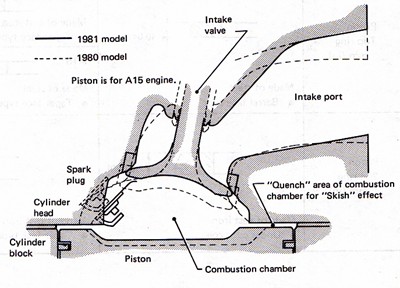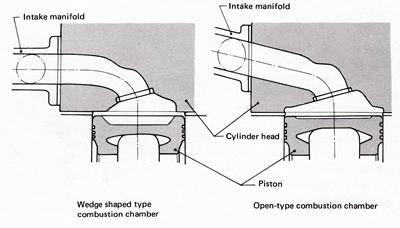Proper quench in the combustion chamber results in more power, and more efficiency so higher fuel economy. It is less like to pre-detonate and will use less spark advance for the same power. It's a win-win scenerio. Datsun used it in some of the A-series engines.
Overview
Quench traditionally is gained by using closed-chamber wedge heads with flat-top piston.
Wedge head (closed chamber, inline valves)

However in 1977 Datsun came out with a dished-piston design with high quench. The use offset dish, so the dish does not interfere with the quench area.

Wedge chamber (left) vs Open Chamber (right)

They say Small Block Chevy gains 1% HP for every 0.01" (0.25 mm) tighter quench (with same CR), and needs less spark advance, so less apt to ping.
Quench Clearance
If you use too thick gasket you lose the quench effect. The quench needs to be 0.75 to 0.50 mm to be effective from what I understand. Of course if you are using dished pistons there's no telling if it will have a proper quench effect.
Measuring clearance

In this example, block had been decked so that piston protrudes 0.006 inch above block. Felpro head gasket is 0.041 inch compressed, so quench clearance is 0.035 inch.
Gaskets
Most A-series head gasket are 1.6 mm thick. Some are 1.2 mm thick.
Nismo metal head gasket which is only 0.020 inch thick (0.50 mm)


![[Datsun 1200 encyclopedia]](/wiki/upload/wiki.png)
